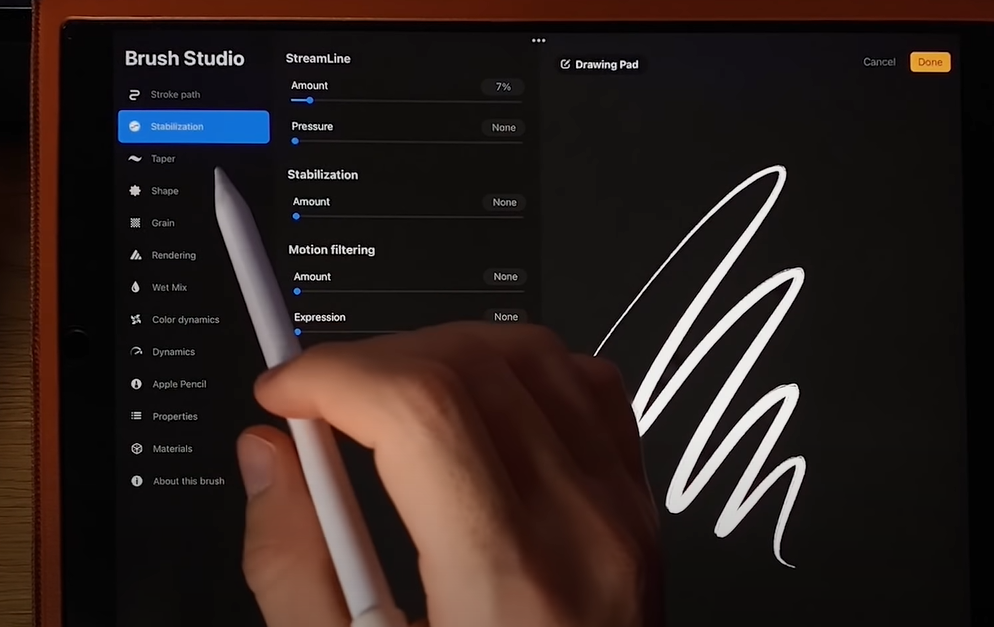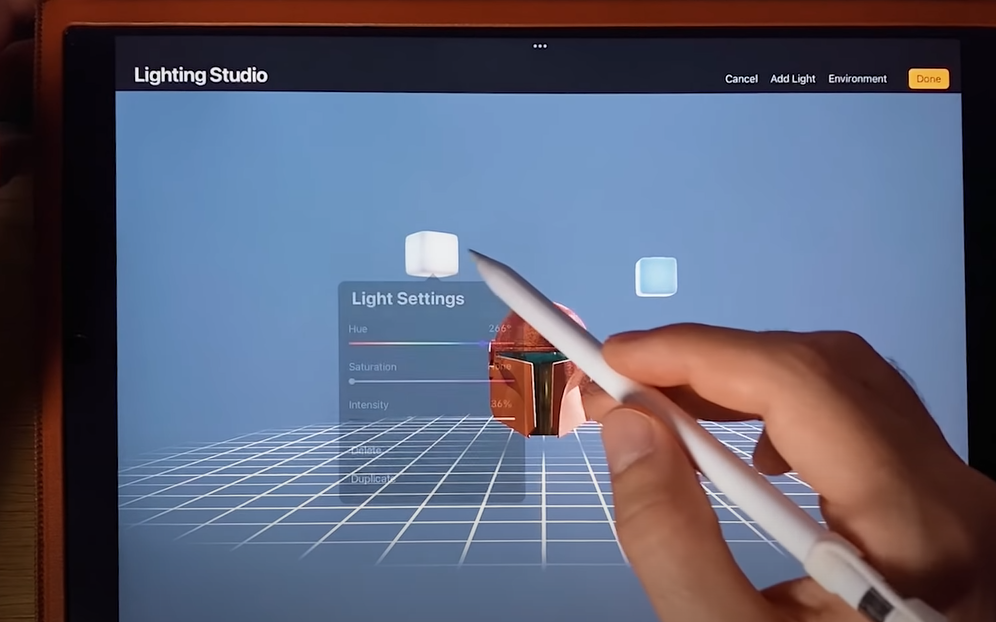Procreate, a globally renowned software application cherished for its instinctive user interface and an impressive array of artistic tools, has firmly established itself as a go-to choice for artists and designers alike. While it has earned its reputation primarily in the realm of 2D art, Procreate’s influence is starting to extend into the world of 3D modeling, albeit in a distinctive and innovative manner.
As of my knowledge cutoff in September 2021, Procreate doesn’t inherently support native 3D modeling capabilities. Nevertheless, artists have been creatively employing it in conjunction with 3D modeling software to craft one-of-a-kind and customizable textures. This clever usage enhances the intricate details and individuality of 3D models, empowering artists to bring their creative visions to life in designs that truly captivate and leave a lasting impression.
The Integration of Procreate and 3D Software
A comprehensive process of integrating Procreate within the 3D modeling workflow includes the following steps:
- Concept Art & Sketching: The journey of creating any 3D model begins with conceptualization. Artists use Procreate’s tools to sketch their ideas, create outlines, and bring their vision to life. It’s simple to erase, modify, and fine-tune designs until the concept perfectly aligns with the artist’s intent;
- Creating Textures: Next comes texture creation, which significantly determines how the 3D model will eventually appear. Artists can leverage Procreate’s diverse range of brushes to create varied textures. From mimicking natural elements like wood grain or rust to creating surreal or abstract patterns, artists have a plethora of options at their disposal;
- Exporting and Importing: After creating textures, artists can export them from Procreate in a variety of file formats such as PSD, JPEG, PNG, among others. These texture files are then imported into the 3D software and mapped onto the 3D models;
- Final Adjustments: Once the textures are imported into the 3D software, artists can adjust the texture’s scale, rotation, and position to fit their models perfectly. These adjustments bring out the intricate details and lend a unique, distinctive character to the 3D models.
For more clarity on how these steps come together in the creative process, do check this detailed video tutorial:
Harnessing the Potential of Layers in Procreate
One of the critical features of Procreate that has made it a hit among artists is the power of layers. Layers give artists the flexibility to work on different elements of their artwork independently without disturbing the entire composition. When it comes to 3D modeling, the usage of layers can be pivotal.
Here is a detailed breakdown of how layers can be used in the context of 3D modeling:
- Base Layer: This is the foundational layer that holds the base color or the underlying tone of the texture;
- Detailing Layer: Artists can then create another layer dedicated to the details. This could include patterns, shapes, or specific elements that provide the texture with depth and intricacy;
- Highlight Layer: A separate layer can be used for highlights. This is where artists add the lightest parts of the texture, which reflect the most light;
- Shadow Layer: Artists can add a layer specifically for shadows. This helps in lending a sense of depth and dimension to the texture;
- Color Variation Layer: To make textures more realistic, artists can add a color variation layer where they subtly change the colors in different parts of the texture.
The Artistry of Brushes in Procreate

In Procreate, brushes are more than just tools for making strokes on the canvas. They are an integral part of the texture creation process. The software offers a vast library of brushes, each with its own unique properties and customizable settings.
The available brushes can be broadly categorized as follows:
- Painting Brushes: Ideal for creating textures that resemble different types of paint effects;
- Drawing Brushes: Useful for sketching out designs and adding intricate details;
- Artistic Brushes: These are unique brushes that help create abstract and decorative textures;
- Texture Brushes: Ideal for creating textures that mimic real-life materials;
- Airbrushes: Useful for soft transitions and gradients within the texture;
- Elements Brushes: These brushes are ideal for creating natural elements like grass, stars, or water;
- Custom Brushes: Procreate also gives artists the freedom to create their own brushes. Artists can adjust various settings and save them as custom brushes, which they can use later.
The Impact of Procreate on 3D Modeling
The marriage of Procreate’s artistic capabilities with 3D modeling software is driving a new era of creativity. Artists can design 3D models with tailor-made textures that embody their vision. This has enriched the quality and diversity of 3D models in the digital space.
Enhancement of Creative Freedom
Procreate is not just a digital painting app; it is a gateway to creative freedom for artists working with 3D models. The application comes with an extensive range of brushes that artists can leverage to add intricate details to their 3D designs. The layers feature further adds to the versatility of Procreate by providing the ability to work on multiple aspects of a model simultaneously.
Personalization of Textures
| Traditional 3D Modeling | Procreate-Enhanced 3D Modeling | |
|---|---|---|
| Texture Creation | Limited to the software’s built-in capabilities | Artists can design textures as per their vision |
| Flexibility | Bound by constraints of the software | Full freedom to experiment with textures |
| Result | Limited uniqueness of 3D models | Highly unique and personalized 3D models |
With Procreate, artists are no longer bound by the constraints of traditional 3D modeling software. They have complete control over the design and look of their textures, thereby creating truly unique and personalized 3D models.
Streamlined Workflow
The user-friendly interface of Procreate combined with its seamless integration with 3D modeling software simplifies the process of 3D modeling. The app allows artists to import and export their work to and from different platforms with ease, saving them considerable time and effort.
Key Workflow Enhancements:
- Easy import/export of work;
- Integration with popular 3D modeling software;
- User-friendly interface.
Increased Accessibility
The simplicity and affordability of Procreate make 3D modeling more accessible to a broader audience. Budding artists and hobbyists can easily learn how to use the application and apply their skills to create impressive 3D models.
Procreate vs. Traditional 3D Software:
- Easier to learn;
- More affordable;
- User-friendly.
Conclusion
While Procreate might not be a conventional tool in the 3D modeling arena, its impressive array of features make it a must-have for any 3D artist. The software empowers artists to venture beyond conventional boundaries and craft stunning, one-of-a-kind 3D models. As the world of 3D modeling continues to evolve and grow, Procreate is sure to remain at the forefront of this exciting artistic revolution.
FAQ
As of 2021, Procreate does not offer native 3D modeling capabilities. However, it is widely used in creating textures for 3D models.
Yes, Procreate brushes can be exported and used in other software that supports the imported brush file formats.
Absolutely, Procreate allows you to create and customize your own brushes.
As of 2021, Procreate is only available for iOS. However, there are other software alternatives available for Android and PC.
